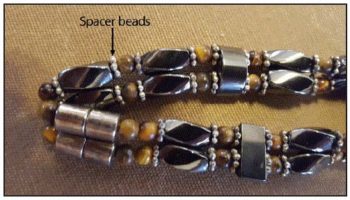PART FIVE OF SPECIAL REPORT
By Brenda Goodman, Elizabeth Fite and Andy Miller
Brenda Goodman is a senior news writer for WebMD. Elizabeth Fite is a health care journalist based in Chattanooga, and Andy Miller is editor and CEO of Georgia Health News. This investigation was supported by a grant from The Arthur M. Blank Family Foundation.
Shortly before midnight, Tamara Rubin was roaming the aisles of a local big-box store in Portland, OR, with her friend Carissa Berg Bonham, armed with a handheld X-ray gun and a smartphone.

They were looking for lead.
They started with garden hoses. The hoses were OK, but some brass connectors and nozzles had high lead levels.
“Unfortunately, they were doing inventory that night and there were tons of employees everywhere telling us not to film,” says Rubin, an independent consumer products advocate.
When they got shooed out of garden supplies, they headed for the fishing gear. It was 11:07 p.m. They broadcast their findings live on Rubin’s Facebook page: “Lead Safe Mama.”
Sure enough, the sinker weights were almost pure lead.

“My husband remembers when he was little boy buying a handful of these for a penny and chewing on them all day long. You see that little line on them? You put them in your mouth and bite down on them. That’s what every fisherman does,” Rubin says.
Weights of another type, dropline sinkers, tested even higher, about 800,000 parts per million (ppm) of lead. To put that in perspective, the federal Consumer Product Safety Commission says household paint and products for kids are unsafe if they have over 90 ppm on their surfaces.
“Each one of these is enough to kill a child,” says Rubin. “If your child swallowed even one of these, they would have seizures and die,” she says.
Rubin has made it her mission to point out how widespread a poison lead can be and how easily it can be found. Two of her four boys were lead-poisoned when a contractor used an unsafe way to remove lead paint on the outside of their house.
Lead, which is both a common element and a potent neurotoxin, is especially dangerous for young children. It can permanently damage their attention and intelligence. It can also harm adults, causing high blood pressure, kidney damage, and, possibly, cancer.
Children most often get poisoned through lead paint or from lead in water.
“It’s rare that a kid is poisoned by a consumer good,” Rubin says, “And if they are, it’s really hard to prove.”
But as long as lead remains in products, the risk still exists. The CDC says no level of lead is safe for kids.
An ongoing risk
Jennifer Lowry, MD, a toxicologist and pediatrician with Children’s Mercy Hospital in Kansas City, MO, investigates cases of severe lead poisoning in kids. One involved an autistic child who was soothed by holding and rubbing together lead fishing weights. The child’s blood lead level was 48 micrograms per deciliter, a level high enough to cause immediate health problems like anemia, fatigue, headaches, and severe abdominal pain. Lead also causes long-term harm. It forever damages brain cells, robbing a child of IQ points and the ability to pay attention.
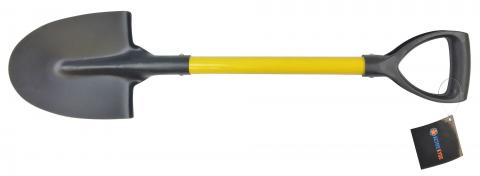
“When you find a child that already has an elevated blood lead, you’re already behind the eight ball,” Lowry says. “The most rapid brain growth is from 0 to 3 years of age. It’s going to affect how the brain basically gets set.”
It’s been more than a decade since a 4-year-old boy died of lead poisoning in Minneapolis after swallowing a piece of a bracelet that was given away with children’s shoes. His case spurred Congress to pass new limits on lead in products intended for children.
Manufacturers of toys and children’s items must now prove to the Consumer Product Safety Commission that their products have been tested and certified to be under the legal limit.
The law has cut the number of cases of lead poisoning tied to consumer products, but the risk remains.
That’s because there are no lead limits on products sold primarily for adults, and that’s where kids can get into trouble.
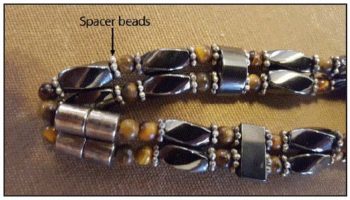
So far, in 2017, the Consumer Product Safety Commission has recalled wicker furniture, a piano bench, a metal-top dining table, a toy garden shovel, and M&M’s-branded earrings for having high lead levels.
The CDC said recently that a 9-month old girl in Connecticut was poisoned in 2016 after her parents bought her a handmade bracelet at a local art fair to soothe her teething pain. Unfortunately, the bracelet was made with lead beads that contained high levels of lead—17,000 ppm. The child had a blood lead of 41, a level high enough to cause anemia.
No warning signs
Rubin says people always ask her if there are warning signs that something might contain lead. She says there really aren’t any reliable tipoffs, such as the country of origin.
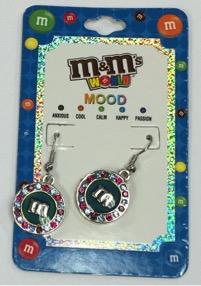
Researchers say she’s right. Pamela Turner, PhD, studies the link between health and housing at the University of Georgia.
“You really don’t know most of the time,” she says. “That made-in-England coffee cup with a glaze on it? I actually had one at a conference that tested high for lead.”
Turner says what Rubin is doing is rare.
“Consumers can’t easily have products tested,” she says. “This kind of testing is less available.”
For her testing, Rubin uses an XRF gun, which stands for X-ray fluorescence spectrometer. The instrument retails for $40,000-$50,000. Rubin rents one for her “testing parties.”
Turner says the XRF is the gold standard for testing, but she cautions that what Rubin is doing isn’t strictly scientific because it involves one test of one product at a time, not the averaged results of a group of products or items.
The XRF also can’t determine how much of the lead in a product is coming off of it. Lead is only dangerous if it is released from a product and inhaled or ingested, says Tom Neltner, chemicals policy director of the Environmental Defense Fund.
Rubin often makes the same point, saying that even when she finds an item that has a lot of lead in it, that doesn’t necessarily mean the lead is getting into your body or making anyone sick. But it’s there.
And she doesn’t claim to be doing scientific studies. She says she is really just trying to make people aware of how much lead is in the stuff that’s around them.
She also has another important goal in her work: to let people know that for every lead-laden product she finds, there are safer choices. In the fishing weights aisle, for example, she also finds lead-free weights made out of steel and zinc.
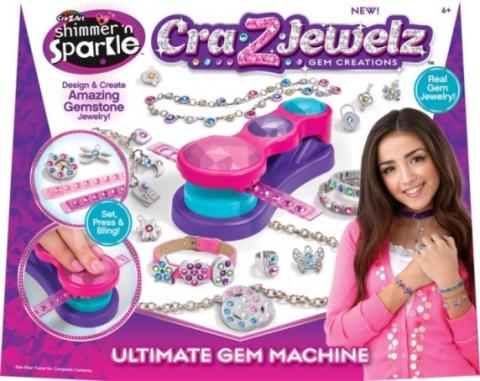
Among the many products she’s tested, Rubin has found lead in popular brands of eco-friendly baby bottles and sippy cups, vintage dishes, old books, modern painted ceramics, enameled cast-iron pans, leaded crystal, ammunition, faux pearls, commemorative drinking glasses, costume jewelry, leather couches, and even trumpet mouthpieces.
In one recent test of 31 kinds of fidget spinners, the popular spinning toys, Rubin found nearly half had higher levels of lead than are legally allowed in products sold to children. Most troubling, the says, was that there was no way to tell which spinners had lead and which ones did not. The problem was often a center wheel made of heavily leaded brass.
“It’s right where you put your fingers,” Rubin says.
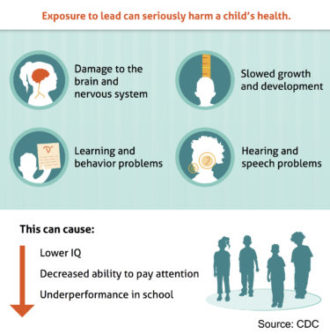
“They’re being marketed to children with autism and ADHD, special needs kids,” she says. “My kids — the first thing they do is spin it and put it up against their mouths.”
She remembers one mom, in St. Louis, who had a child with unexplained lead poisoning. State health department inspectors couldn’t find the source. Rubin says she spent an afternoon at the woman’s “pristine” home patiently testing everything they could think of.
The woman had a large, new leather sofa with three seat cushions. The middle cushion tested positive for lead. The other parts of the couch were negative.
“That’s how random it is. Someone, in one batch of leather that was tanning it, used lead. The others didn’t,” she says.
When leather is tainted, it’s usually because of a chemical called lead acetate, which is used to tan and color leather and vinyl. Lead acetate has a sweet taste that encourages babies and toddlers to suck and chew the poisonous items.
In 2009, the Center for Environmental Health, a private nonprofit, began testing faux leather purses and accessories. They found lead in items at 16 of the 21 stores they visited. After their findings made headlines, hundreds of manufacturers signed a legal settlement agreeing to get lead out of their products. That helped, but it didn’t solve the problem. In follow-up testing, the group has continued to find purses, shoes, and belts with high lead levels.
Yellow and green items were the most likely to have high lead levels, says Judy Braiman, president of the Empire State Consumer Project, a nonprofit group that lab-tests consumer products for lead and other heavy metals. They did some of the testing for the Center for Environmental Health project.
Lead acetate is also in some men’s hair dyes that fade away gray. This year, a coalition of consumer groups filed a petition with the FDA, asking the agency to ban lead in hair dyes. The petition cites cases of men who had numbness and tingling in their hands and feet, high blood pressure, and hair loss after using lead-based dyes.
Food can also be a source of lead. Earlier this year, the Environmental Defense Fund found that 20 percent of baby foods and juices had detectable levels of lead. And a new report from the Pew Charitable Trusts and the Robert Wood Johnson Foundation highlights the risk to kids from that imported candies and spices.

The best way to stay safe, Rubin says, is to be more informed.
“Stop being a consumer without knowing for sure that it’s safe,” she says. She advises her readers to research products as much as they can before they purchase.
The other piece of advice she gives is to buy plain things.
“Buy things that are undecorated and unadorned,” she says. “Your pans don’t need to be red. Buy clear, simple glasses and simple plates that aren’t decorated.”
But buy those simple things new. When it comes to household items you will actually use, she says, “Get rid of anything vintage. Anything over 40 years old probably has lead in it.”
Do you have a child with an elevated blood lead level in Georgia?
We want to hear your story. Email us at amiller@georgiahealthnews.com or bgoodman @webmd.net
PART ONE: Lax oversight dilutes impact of testing water for lead
PART TWO: Looking for Georgia’s lead service lines
PART THREE: Her home showed high lead; she wasn’t told
PART FOUR: As lead poisoned a child, a slow state response
Sources:
Tamara Rubin, Consumer Advocate, Portland, Ore.
Jennifer Lowry, MD, section chief, Medical Toxicology, Children’s Mercy Hospital in Kansas City, MO
Tom Neltner, Chemicals Policy Director, Environmental Defense Fund, Washington, D.C.
U.S. Consumer Product Safety Commission, “Total Lead Content”, accessed Aug. 28, 2017
Environmental Defense Fund, “Color Additive Petition for Lead Acetate Hair Dyes,” Feb. 4, 2017
Center for Environmental Health, “Lead in Purses, Belts and Shoes,” Accessed Aug. 28, 2017
Judy Braiman, president, Empire State Consumer Project, Rochester, N.Y.
Pew Charitable Trusts, “10 Policies to Prevent and Respond to Childhood Lead Exposure,” Aug. 30, 2017
Environmental Defense Fund, Lead in food: A Hidden Health Threat, June 15, 2017


